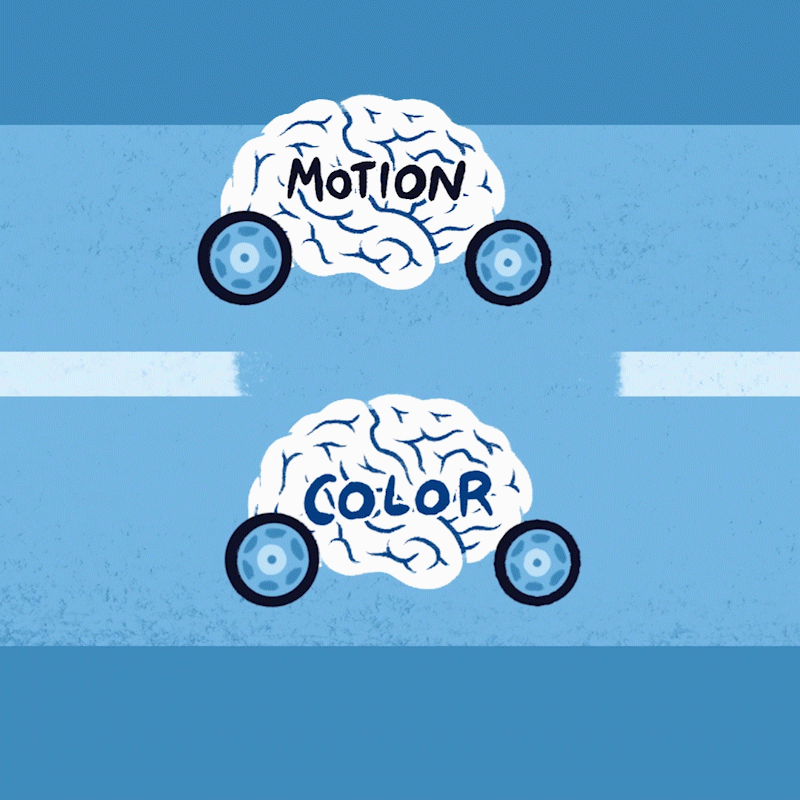NEW YORK, NY — A whole lot of living unfolds around making decisions. These can be as mundane as choosing to take the bus or the subway, or as life-changing as picking which career path to follow. Whatever factors the brain summons into its inner calculation, at some moment it commits to a choice: the bus this time, not the train; the job offer from Columbia, instead of NYU.
“Just about everything we do involves making decisions,” says Michael Shadlen, MD, PhD, a principal investigator at Columbia’s Zuckerman Institute. “The more we learn about how brains make decisions, the more we will learn about ourselves,” added Dr. Shadlen, also a professor of neuroscience at Columbia’s Vagelos College of Physicians and Surgeons.
For decades his lab has been doing research, with both people and lab animals as subjects, to uncover what is happening in brains during the process of making decisions.
In a paper published online today in the journal Neuron, Dr. Shadlen and his colleagues report finding distinct and telling patterns of activity in two interconnected brain areas in lab animals that mirror key phases of a decision: gathering information (from other brain areas) to weigh options and then actually committing to one.
Neurons in one of those brain areas, the lateral intraparietal (LIP) cortex, fire in meandering ways that would be expected if they were collecting input needed to make a decision. But neurons in the other brain area, the superior colliculus (SC), fire in short bursts of activity, which the scientists say corresponds to a signal to stop mulling over options and to commit to a specific choice. This opens the way to enacting the decision.
In the researchers’ studies, lab animals were trained to move their eyes to the left or right to indicate which general direction they perceived a bunch of moving dots to be heading. The scientists then recorded firing patterns simultaneously from about 200 neurons in both the LIP and SC. Analysis of the resulting data revealed the distinct types of activity in the two brain regions.
The researchers suggest that it might be possible to find similar patterns of activity elsewhere in the brain underpinning other types of decisions.
“We think these bursts in the superior colliculus lead to the commitment to make a choice,” said Gabriel Stine, PhD, first author on the paper, who recently finished his graduate work in Dr. Shadlen’s lab and is now a postdoctoral scientist at MIT. “A big question for us now is if this mechanism for committing to a choice represents a general principle for how other, more complicated decisions are made in the brain.”
The research team wanted to make sure their interpretation of the different roles for LIP and SC in decision-making was sound, so they tried another way to test it: They chemically inactivated SC cells on one side of the brain. Under those conditions, the subjects seemed to be impaired in their ability to stop deliberating for one choice but not the other.
"It was as though the stop signal was cut off,” said Dr. Stine. “This suggests the SC is involved in causing a decision process to take a crucial step toward completion, to transition from deliberation to commitment.”
"The timing of that shift is often just as important as what we ultimately choose," Dr. Stine pointed out. “If you make a decision too quickly, before you accumulate enough relevant information, that would be impulsive, but if you wait too long you get stuck in indecision,” he said. These differences in decision-making could have relevance in conditions such as attention deficit/hyperactivity disorder (ADHD) and obsessive-compulsive disorder (OCD), he added.
The investigators credit a new generation of brain-cell-listening technology for enabling them for the first time to record simultaneously from hundreds of cells in different areas of the brain. With earlier technology, it would not have been possible to spy on the cells clearly enough to compare the simultaneous activities of enough LIP and SC cells to get meaningful results, the scientists say.
“Decision-making reveals the elements of thought,” said Dr. Shadlen, who also is a Howard Hughes Medical Institute Investigator. “By elucidating the inner workings of decision-making in the brain, we hope to uncover new therapeutic strategies to treat a wide range of disorders that affect thoughts and rationality.”
###
The paper, titled “A neural mechanism for terminating decisions,” was published online in Neuron on June 22, 2023. Its list of authors includes: Gabriel M. Stine, Eric M. Trautmann, Danique Jeurissen and Michael N. Shadlen.



